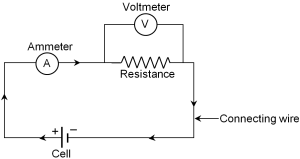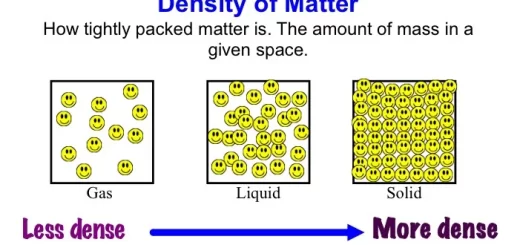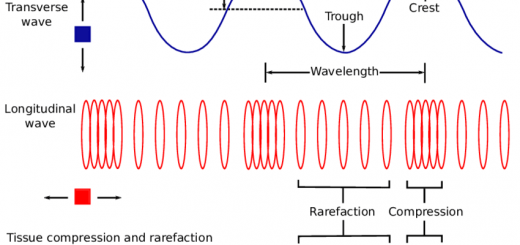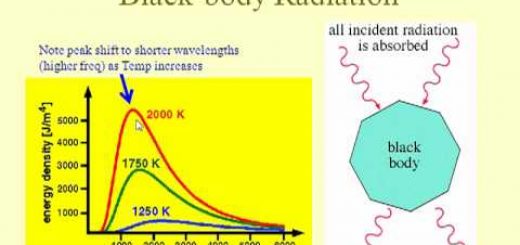Properties of Electric current, Simple electric circuit, Current intensity and Potential difference
The electrons still rotate around the nucleus due to the attraction force between the protons in the nucleus and electrons. The electrons may leave the atom and move freely due to the weakness of the attraction force between the protons and electrons. The current flows through the circuit only when it is closed because when the circuit is closed, all its components are connected.
Physical properties of the electric current
Electric energy is the cleanest source of energy as it does not pollute the environment, We cannot imagine our life without electric current, as electricity plays an important role in our daily life, such as:
- The electric circuit is used to light up our houses, factories, streets, etc.
- The electric circuit is used in operating some machines, such as radios, televisions, washing machines, irons, electric heaters. etc.
The Electric Circuit
The electric circuit consists of many components, and each one of these components plays a certain role.
Structure of simple electric circuit
- Electric lamp indicates the flow of the electric current.
- Electric key: Opening and closing the circuit.
- Connecting wire: Connecting the components of the electric circuit with each other.
- Electric cell: The source of the electric current.
- Electric battery: The source of the electric current.
The two parallel lines in the electric circuit refer to the dry cell where, The tallest line represents the positive pole, The smallest line represents the negative pole, The electric lamp illuminates in the circuit as all components of the circuit are connected with each other (Closed-circuit), The electric lamp doesn’t illuminate in the circuit as the circuit is open.
Electric Current
Electric current is generated in electric power stations that are away from our houses by hundreds or thousands of kilometers. All elements consist of atoms which consist of:
- Electron (Negatively charged) is a very small particle that rotates around the nucleus due to the attraction force between the nucleus and electrons.
- Nucleus (Positively charged) is found in the center of the atom and contains two types of particles: Protons (positively charged +), and Neutrons (Electrically neutral -).
When this attraction force is weak or vanished, electrons will leave the atom and become free. Upon this idea, electric connecting wires are made up of metals characterized by the presence of weak attraction force between its protons and its electrons because on connecting these wires with an electric source, an electromotive force is generated and electrons are pumped and move in the wires (conductors) creating the electric current.
Therefore, The electric current is the flow of electric negative charges (electrons) through a conducting material (as a metal wire). The atom is electrically neutral because the number of protons (positively charged) in the nucleus equals the number of electrons (negatively charged) that rotate around the nucleus, The nucleus is positively charged because it contains protons (positively charged) and neutral neutrons
Physical properties of the electric current
Current intensity
The electric current intensity is the quantity of electricity in coulomb or the electric charges flowing through a cross-section of the conductor in one second, When a quantity of charge (q) coulomb flows through a conductor in a time (t) second, the electric current intensity (I) is given by:
Current intensity (I) = Quantity of charge (q)/ Time in seconds (t)
The measuring unit of the current intensity (I) is the “Ampere”. The measuring unit of the quantity of electricity (quantity of charge) (q) is the “Coulomb”. The measuring unit of time (t) is the “Second”.
1 Ampere = I Coulomb/1 Second
The ampere is the electric current intensity passing through a circuit when a quantity of charge of one coulomb passes through a given cross-section in time of one second, The coulomb is the quantity of charge transferred by a constant current intensity of one ampere in time of one second. When the electric current intensity passing through a conductor is 1.5 ampere, the quantity of electric charge that passes through this conductor in one second equals 1.5 coulomb.
Problems
Calculate the current intensity passing through a cross-section due to the flow of 5400 coulomb for 5 minutes.
Solution:
Time = 5 x 60 = 300 sec.
Current intensity (I) = quantity of charge (q)/ time (t) = 5400/300 = 18 amp.
If an electric current of intensity 6 ampere passes through a conductor in 15 seconds, find the quantity of electric charge that passes through a cross-section of this conductor.
Solution:
q = I × t = 6 × 15= 90 coulomb.
What happens to the current intensity in the following cases
If the quantity of charge flows through a conductor increases to double, and the time remains constant, The current intensity increases to double.
If the time of charge flows through a conductor increases to double, and the quantity of charge remains constant, The current intensity decreases to half.
If the quantity of charge flows through a conductor increases to double. and the time decreases to half, The current intensity increases to four.
The electric current intensity passing through a conductor is directly proportional to the quantity of charge flowing through a cross-section of this conductor, when the time remains constant.
The electric current intensity passing through a conductor is inversely proportional to the time of charge flowing through a cross-section of this conductor, when the quantity of charge remains constant.
The ammeter apparatus
It is used in measuring the electric current intensity passing through the circuit. It is connected in the electric circuits in series, as follows:
- The positive pole of the ammeter (red pole) is connected to the positive pole of the dry cell.
- The negative pole of the ammeter (black pole) is connected to the negative pole of the dry cell.
Ammeter is not connected directly to the battery, because this damages the ammeter. In the electric circuit, the ammeter is connected in series to measure the electric current intensity passing through the circuit.
The electric potential difference
The electric potential of a conductor is the state of an electric conductor that shows the transfer of electricity from or to it, when it is connected to another conductor
If you have two objects, a hot object (A) and a cold object (B), then connect the two objects by a metal bar. You observe that the temperature of the object (A) decreases gradually and that of the object (B) increases gradually until their temperatures become equal. This is because the heat energy moves from the hot object to the cold one.
This movement does not depend on the amount of heat of the two objects. But it depends on the difference in their temperatures. Thus temperature difference determines the movement of heat energy to and from an object.
Similarly in electricity
If two charged conductors touch or are connected with a wire and one of them conductor (A) has an electric potential higher than the other conductor (B), electric energy (in the form of electric current) will flow from (A) to (B) until their electric potential becomes equal, Also, the transference of charges does not depend on their amount, But it depends on the difference in their potential.
When two conductors that have the same electric potential are connected by a wire, No electric current will pass through them, because there is no potential difference between them (potential difference = zero), From the previous explanation, the potential difference across two terminals of a conductor can be defined as:
The potential difference across two terminals of a conductor is the value of the work done to transfer a quantity of charge of one coulomb between the two poles of this conductor. When two conductors have the same potential are connected, no electric current passes because there is no potential difference between them.
Potential diff. (V) = Work (W)/ Amount (quantity) of charge (q)
The measuring unit of the potential difference (V) is the “Volt”. The measuring unit of the work (w) is the “Joule”, The measuring unit of the quantity of electricity (q) is the “Coulomb”.
I Volt = 1 Joule/ 1 Coulomb
The volt is the potential difference across two terminals of a conductor on doing a work of one joule to transfer a quantity of charge one coulomb. When a work of 10 joule is done to transfer a charge of 5 coulomb between two points. This means that the potential difference across the two points equals 10/5 = 2 volt.
Problems
If the work done to transfer an electric charge of 300 coulomb between two points is 33300 joule, calculate the potential difference across the two points.
Solution:
Potential difference (V) = Work (W)/ Charge (q)
Potential difference (V) = 33300/300 = 111 volt.
If the work done to transfer an electric charge between two points is 20 joule, and the time of charge flows through the conductor is 2 seconds, calculate the electric current intensity that passes through the circuit.
Solution:
q = W/V = 20/5 = 4 coulomb.
I = q/t = 4/2 = 2 amp.
What happens for the potential difference in the following cases…?
If the work done through a conductor decreases to half and the quantity of charge remains constant, The potential difference decreases to half.
If the quantity of charge flows through a conductor decreases to half, and the work remains constant, the potential difference increases to double.
If the work done through a conductor increases to double, and the quantity of charge decreases to the half. The potential difference increases to four-time.
The electric potential difference between two terminals of a conductor is directly proportional to the work done to transfer a quantity of charge across the section of this conductor, when the quantity of charge remains constant.
The electric potential difference between two terminals of a conductor is inversely proportional to the quantity of charge flowing through a cross-section of this conductor, when the work done remains constant.
The electromotive force
The electric source (electric cell or battery) acts as a pump to maintain a continuous flow of electric current in the electric circuit. The power of this electric source is called the “Electromotive force” (e.m.f.). The electromotive force (e.m.f.) is the potential difference between the two poles of the battery when the electric circuit is open (no current passes through the circuit). The measuring unit of the emf is the “Volt”.
When the electromotive force of an electric cell is 1.1 volt. This means that the potential difference between the two poles of the electric cell when the circuit is open is 1.1 volt.
The voltmeter apparatus
It is used in measuring:
- The potential difference between two ends of a conductor.
- The electromotive force (e.m.f.) of the battery.
It is connected in the electric circuits in parallel. as follows:
- The positive pole of the voltmeter (red pole) is connected to the positive pole of the dry cell.
- The negative pole of the voltmeter (black pole) is connected to the negative pole of the dry cell.
Connection of voltmeter in the electric circuits
- In a closed circuit: It is connected in parallel between the two ends (terminals) of a conductor to measure the potential difference.
- In an open circuit: It is connected in parallel between the poles of the dry cell or battery to measure the electromotive force of the battery.
The electric potential at home and in electric equipment
The electric voltage at home is 220 volt. Big electric appliances, such as washing machines and dishwashers use relatively high voltages of 110-240 volt. But electronic devices, such as mobile cell phones use relatively tiny voltage.
If you connect a device of low voltage, directly at home of 220 volt source, it will be damaged. So, you should use a device known as the electric transformer (step-down transformer) to reduce the electric potential of the electric source.
If you need to charge your mobile phone, you should use the electric transformer to reduce the electric potential of the current used and get a suitable electric potential to charge the mobile.
You can follow science online on YouTube from this link: Science online
You can download Science online application on Google Play from this link: Science online Apps on Google Play
Electric resistance, Relation between Current intensity and Potential difference (Ohm’s law)
Speed of chemical reactions, Types of catalytic reactions and Catalytic converter
Oxidation and reduction reactions according to Traditional concept & Electronic concept
Substitution reactions, Chemical activity series, types of simple and double substitution reactions
Chemical reactions, Types of thermal decomposition reactions and Air bags importance
Simple and double substitution reactions, Reactions between an acid and a salt
Chemical activity series, Chemical properties of metals and nonmetals




